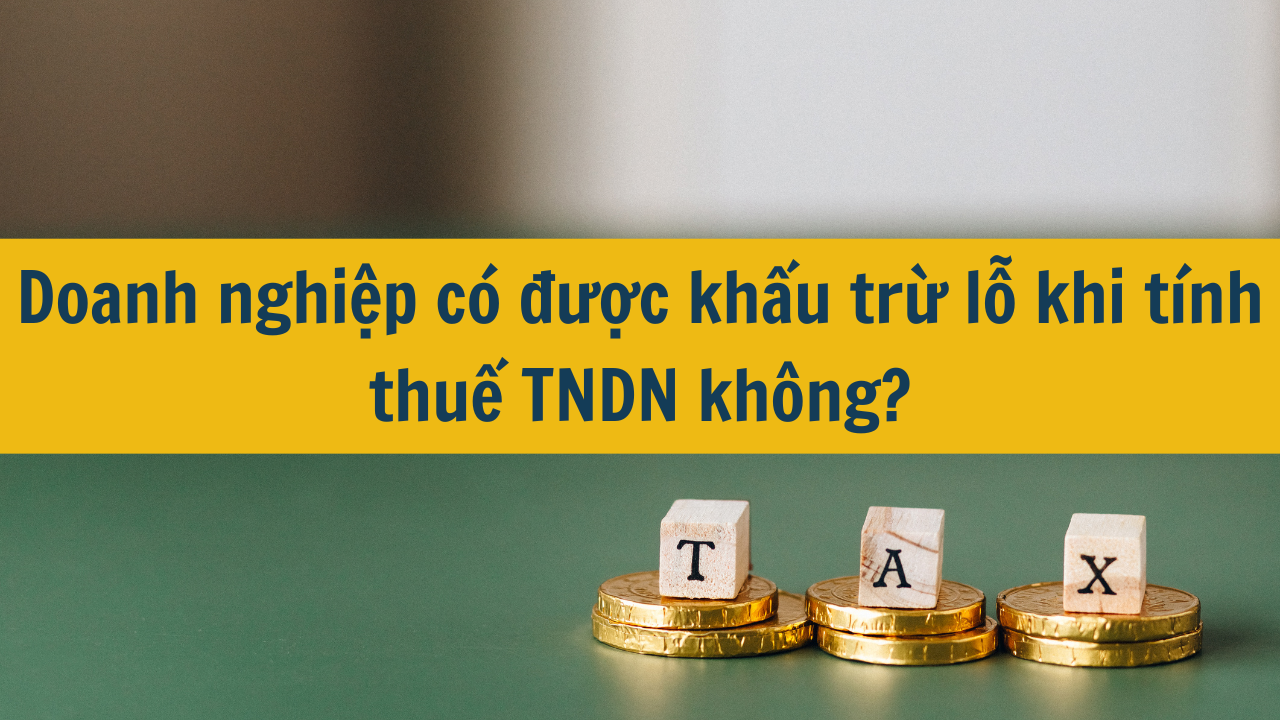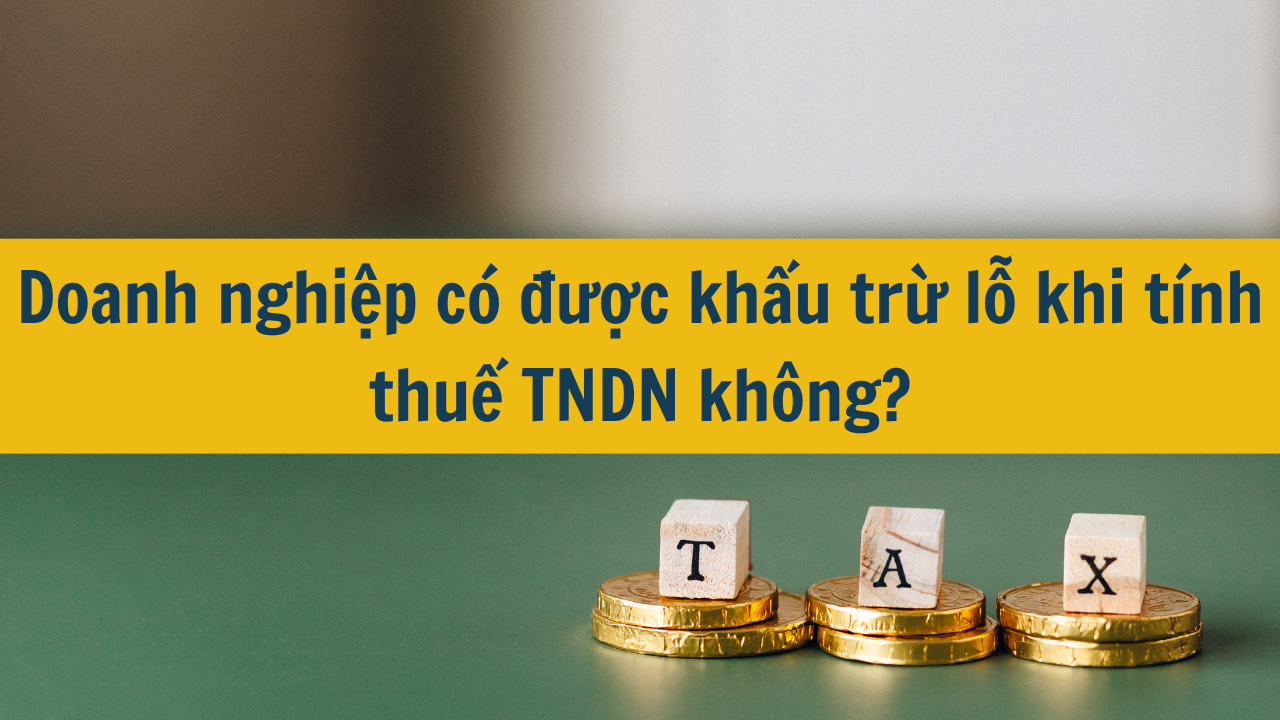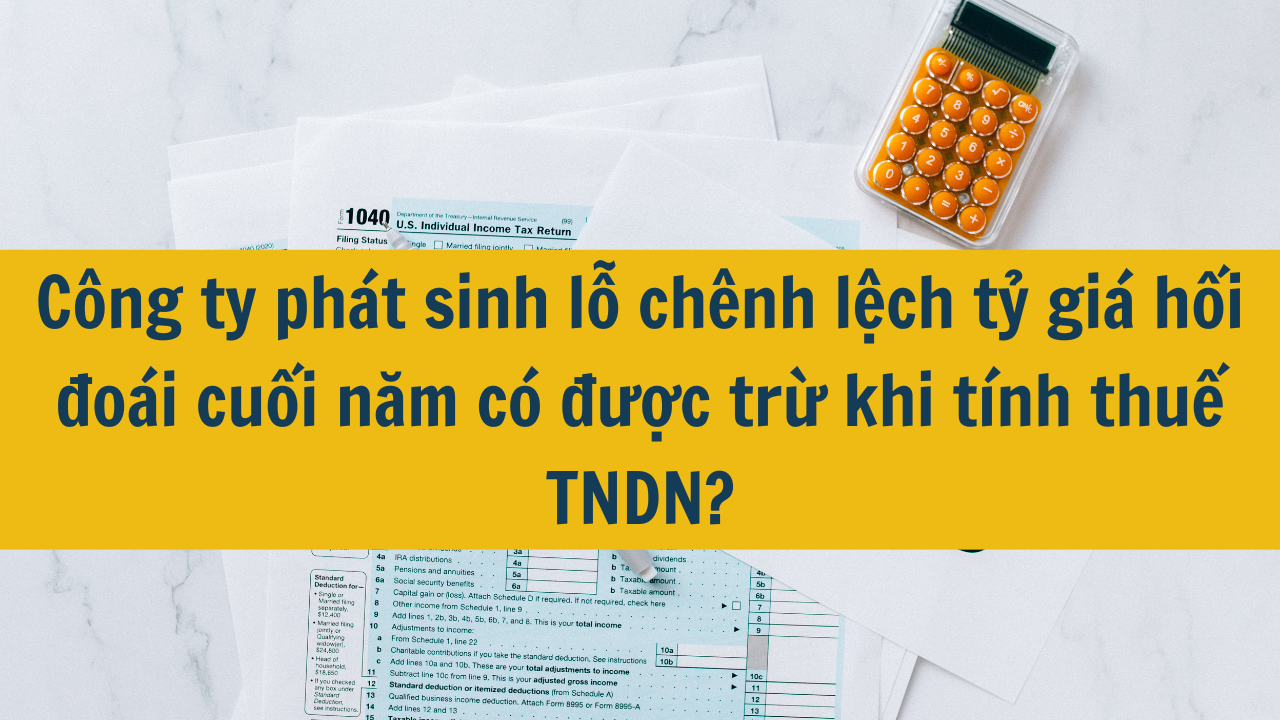 Tìm kiếm
Tìm kiếm
Chương V Thông tư 78/2014/TT-BTC: Thu nhập từ chuyển nhượng bất động sản
| Số hiệu: | 78/2014/TT-BTC | Loại văn bản: | Thông tư |
| Nơi ban hành: | Bộ Tài chính | Người ký: | Đỗ Hoàng Anh Tuấn |
| Ngày ban hành: | 18/06/2014 | Ngày hiệu lực: | 02/08/2014 |
| Ngày công báo: | 10/07/2014 | Số công báo: | Từ số 657 đến số 658 |
| Lĩnh vực: | Doanh nghiệp, Thuế - Phí - Lệ Phí | Tình trạng: | Còn hiệu lực |
TÓM TẮT VĂN BẢN
Đã có Thông tư 78/2014/TT-BTC hướng dẫn mới về thuế TNDN
Bộ Tài chính vừa ban hành Thông tư 78/2014/TT-BTC hướng dẫn Nghị định 218/2013/NĐ-CP quy định và hướng dẫn thi hành luật Thuế thu nhập doanh nghiệp.
Theo đó, Thông tư hướng dẫn về khoản chi có hóa đơn từ 20 triệu đồng trở lên thanh toán không dùng tiền mặt như sau:
- Đến thời điểm ghi nhận chi phí doanh nghiệp chưa thanh toán và chưa có chứng từ thanh toán không dùng tiền mặt thì được tính vào chi phí được trừ khi xác định thu nhập chịu thuế.
- Trường hợp khi thanh toán doanh nghiệp không có chứng từ thanh toán không dùng tiền mặt thì phải kê khai, điều chỉnh giảm chi phí đối với phần giá trị hàng hóa, dịch vụ không có chứng từ thanh toán không dùng tiền mặt.
Đối với các hóa đơn mua hàng hóa, dịch vụ đã thanh toán bằng tiền mặt phát sinh trước ngày 02/8/2014 thì không phải điều chỉnh lại theo quy định nêu trên.
Thông tư này có hiệu lực từ 02/8/2014 và thay thế cho Thông tư 123/2012/TT-BTC .
Văn bản tiếng việt
Văn bản tiếng anh
1. Doanh nghiệp thuộc diện chịu thuế thu nhập từ chuyển nhượng bất động sản bao gồm: Doanh nghiệp thuộc mọi thành phần kinh tế, mọi ngành nghề có thu nhập từ hoạt động chuyển nhượng bất động sản; Doanh nghiệp kinh doanh bất động sản có thu nhập từ hoạt động cho thuê lại đất.
2. Thu nhập từ hoạt động chuyển nhượng bất động sản bao gồm: thu nhập từ chuyển nhượng quyền sử dụng đất, chuyển nhượng quyền thuê đất (gồm cả chuyển nhượng dự án gắn với chuyển nhượng quyền sử dụng đất, quyền thuê đất theo quy định của pháp luật); Thu nhập từ hoạt động cho thuê lại đất của doanh nghiệp kinh doanh bất động sản theo quy định của pháp luật về đất đai không phân biệt có hay không có kết cấu hạ tầng, công trình kiến trúc gắn liền với đất; Thu nhập từ chuyển nhượng nhà, công trình xây dựng gắn liền với đất, kể cả các tài sản gắn liền với nhà, công trình xây dựng đó nếu không tách riêng giá trị tài sản khi chuyển nhượng không phân biệt có hay không có chuyển nhượng quyền sử dụng đất, chuyển nhượng quyền thuê đất; Thu nhập từ chuyển nhượng các tài sản gắn liền với đất; Thu nhập từ chuyển nhượng quyền sở hữu hoặc quyền sử dụng nhà ở.
Thu nhập từ cho thuê lại đất của doanh nghiệp kinh doanh bất động sản không bao gồm trường hợp doanh nghiệp chỉ cho thuê nhà, cơ sở hạ tầng, công trình kiến trúc trên đất.
Căn cứ tính thuế thu nhập từ chuyển nhượng bất động sản là thu nhập tính thuế và thuế suất.
Thu nhập tính thuế bằng (=) thu nhập chịu thuế trừ (-) các khoản lỗ của hoạt động chuyển nhượng bất động sản của các năm trước (nếu có).
1. Thu nhập chịu thuế.
Thu nhập chịu thuế từ chuyển nhượng bất động sản được xác định bằng doanh thu thu được từ hoạt động chuyển nhượng bất động sản trừ giá vốn của bất động sản và các khoản chi phí được trừ liên quan đến hoạt động chuyển nhượng bất động sản.
a) Doanh thu từ hoạt động chuyển nhượng bất động sản.
a.1) Doanh thu từ hoạt động chuyển nhượng bất động sản được xác định theo giá thực tế chuyển nhượng bất động sản theo hợp đồng chuyển nhượng, mua bán bất động sản phù hợp với quy định của pháp luật (bao gồm cả các khoản phụ thu và phí thu thêm nếu có).
Trường hợp giá chuyển quyền sử dụng đất theo hợp đồng chuyển nhượng, mua bán bất động sản thấp hơn giá đất tại bảng giá đất do Ủy ban nhân dân tỉnh, thành phố trực thuộc Trung ương quy định tại thời điểm ký hợp đồng chuyển nhượng bất động sản thì tính theo giá đất do Ủy ban nhân dân tỉnh, thành phố trực thuộc Trung ương quy định tại thời điểm ký hợp đồng chuyển nhượng bất động sản.
- Thời điểm xác định doanh thu tính thuế là thời điểm bên bán bàn giao bất động sản cho bên mua, không phụ thuộc việc bên mua đã đăng ký quyền sở hữu tài sản, quyền sử dụng đất, xác lập quyền sử dụng đất tại cơ quan nhà nước có thẩm quyền.
- Trường hợp doanh nghiệp thực hiện dự án đầu tư cơ sở hạ tầng, nhà để chuyển nhượng hoặc cho thuê, có thu tiền ứng trước của khách hàng theo tiến độ dưới mọi hình thức thì thời điểm xác định doanh thu tính thuế thu nhập doanh nghiệp tạm nộp là thời điểm thu tiền của khách hàng, cụ thể:
+ Trường hợp doanh nghiệp có thu tiền của khách hàng mà xác định được chi phí tương ứng với doanh thu đã ghi nhận (bao gồm cả chi phí trích trước của phần dự toán hạng mục công trình chưa hoàn thành tương ứng với doanh thu đã ghi nhận) thì doanh nghiệp kê khai nộp thuế thu nhập doanh nghiệp theo doanh thu trừ chi phí.
+ Trường hợp doanh nghiệp có thu tiền của khách hàng mà chưa xác định được chi phí tương ứng với doanh thu thì doanh nghiệp kê khai tạm nộp thuế thu nhập doanh nghiệp theo tỷ lệ 1% trên doanh thu thu được tiền và doanh thu này chưa phải tính vào doanh thu tính thuế thu nhập doanh nghiệp trong năm.
Khi bàn giao bất động sản doanh nghiệp phải thực hiện quyết toán thuế thu nhập doanh nghiệp và quyết toán lại số thuế thu nhập doanh nghiệp phải nộp. Trường hợp số thuế thu nhập doanh nghiệp đã tạm nộp thấp hơn số thuế thu nhập doanh nghiệp phải nộp thì doanh nghiệp phải nộp đủ số thuế còn thiếu vào Ngân sách Nhà nước. Trường hợp số thuế thu nhập doanh nghiệp đã tạm nộp lớn hơn số thuế phải nộp thì doanh nghiệp được trừ số thuế nộp thừa vào số thuế thu nhập doanh nghiệp phải nộp của kỳ tiếp theo hoặc được hoàn lại số thuế đã nộp thừa.
Đối với doanh nghiệp kinh doanh bất động sản có thu tiền ứng trước của khách hàng theo tiến độ và kê khai tạm nộp thuế theo tỷ lệ % trên doanh thu thu được tiền, doanh thu này chưa phải tính vào doanh thu tính thuế thu nhập doanh nghiệp trong năm đồng thời có phát sinh chi phí quảng cáo, tiếp thị, khuyến mại, hoa hồng môi giới khi bắt đầu chào bán vào năm phát sinh doanh thu thu tiền theo tiến độ thì chưa tính các khoản chi phí này vào năm phát sinh chi phí. Các khoản chi phí quảng cáo, tiếp thị, khuyến mại, hoa hồng môi giới này được tính vào chi phí được trừ theo mức khống chế theo quy định vào năm đầu tiên bàn giao bất động sản, phát sinh doanh thu tính thuế thu nhập doanh nghiệp.
a.2) Doanh thu để tính thu nhập chịu thuế trong một số trường hợp được xác định như sau:
- Trường hợp doanh nghiệp có cho thuê lại đất thì doanh thu để tính thu nhập chịu thuế là số tiền bên thuê trả từng kỳ theo hợp đồng thuê. Trường hợp bên thuê trả tiền thuê trước cho nhiều năm thì doanh thu để tính thu nhập chịu thuế được phân bổ cho số năm trả tiền trước hoặc được xác định theo doanh thu trả tiền một lần. Việc chọn hình thức doanh thu trả tiền một lần chỉ được xác định khi doanh nghiệp đã đảm bảo hoàn thành các trách nhiệm tài chính đối với Nhà nước, đảm bảo các nghĩa vụ đối với các bên thuê lại đất cho hết thời hạn cho thuê lại đất.
Trường hợp doanh nghiệp đang trong thời gian hưởng ưu đãi thuế thu nhập doanh nghiệp lựa chọn phương pháp xác định doanh thu để tính thu nhập chịu thuế là toàn bộ số tiền thuê bên thuê trả trước cho nhiều năm thì việc xác định số thuế thu nhập doanh nghiệp từng năm miễn thuế, giảm thuế căn cứ vào tổng số thuế thu nhập doanh nghiệp của số năm trả tiền trước chia (:) số năm bên thuê trả tiền trước.
- Trường hợp tổ chức tín dụng nhận giá trị quyền sử dụng đất bảo đảm tiền vay để thay thế cho việc thực hiện nghĩa vụ được bảo đảm nếu có chuyển quyền sử dụng đất là tài sản thế chấp bảo đảm tiền vay thì doanh thu để tính thu nhập chịu thuế là giá chuyển nhượng quyền sử dụng đất do các bên thỏa thuận.
- Trường hợp chuyển quyền sử dụng đất là tài sản kê biên bảo đảm thi hành án thì doanh thu để tính thu nhập chịu thuế là giá chuyển nhượng quyền sử dụng đất do các bên đương sự thỏa thuận hoặc giá do Hội đồng định giá xác định.
Việc xác định doanh thu đối với các trường hợp nêu tại tiết a2 phải đảm bảo các nguyên tắc nêu tại tiết a1 điểm này.
b) Chi phí chuyển nhượng bất động sản:
b.1) Nguyên tắc xác định chi phí:
- Các khoản chi được trừ để xác định thu nhập chịu thuế của hoạt động chuyển nhượng bất động sản trong kỳ tính thuế phải tương ứng với doanh thu để tính thu nhập chịu thuế và phải đảm bảo các điều kiện quy định các khoản chi được trừ và không thuộc các khoản chi không được trừ quy định tại Điều 6 Thông tư này.
- Trường hợp dự án đầu tư hoàn thành từng phần và chuyển nhượng dần theo tiến độ hoàn thành thì các khoản chi phí chung sử dụng cho dự án, chi phí trực tiếp sử dụng cho phần dự án đã hoàn thành được phân bổ theo m2 đất chuyển quyền để xác định thu nhập chịu thuế của diện tích đất chuyển quyền; bao gồm: Chi phí đường giao thông nội bộ; khuôn viên cây xanh; chi phí đầu tư xây dựng hệ thống cấp, thoát nước; trạm biến thế điện; chi phí bồi thường về tài sản trên đất; Chi phí bồi thường, hỗ trợ, tái định cư và kinh phí tổ chức thực hiện bồi thường giải phóng mặt bằng được cấp có thẩm quyền phê duyệt còn lại chưa được trừ vào tiền sử dụng đất, tiền thuê đất theo quy định của chính sách thu tiền sử dụng đất, thu tiền thuê đất, tiền sử dụng đất, tiền thuê đất phải nộp Ngân sách Nhà nước, các chi phí khác đầu tư trên đất liên quan đến chuyển quyền sử dụng đất, chuyển quyền thuê đất.
Việc phân bổ các chi phí trên được thực hiện theo công thức sau:
|
Chi phí phân bổ cho diện tích đất đã chuyển nhượng |
=
|
Tổng chi phí đầu tư kết cấu hạ tầng |
x
|
Diện tích đất đã chuyển nhượng
|
|
Tổng diện tích đất được giao làm dự án (trừ diện tích đất sử dụng vào mục đích công cộng theo quy định pháp luật về đất) |
Trường hợp một phần diện tích của dự án không chuyển nhượng được sử dụng vào hoạt động kinh doanh khác thì các khoản chi phí chung nêu trên cũng phân bổ cho cả phần diện tích này để theo dõi, hạch toán, kê khai nộp thuế thu nhập doanh nghiệp đối với hoạt động kinh doanh khác.
Trường hợp doanh nghiệp có hoạt động đầu tư xây dựng cơ sở hạ tầng kéo dài trong nhiều năm và chỉ quyết toán giá trị kết cấu hạ tầng khi toàn bộ công việc hoàn tất thì khi tổng hợp chi phí chuyển nhượng bất động sản cho phần diện tích đất đã chuyển quyền, doanh nghiệp được tạm phân bổ chi phí đầu tư kết cấu hạ tầng thực tế đã phát sinh theo tỷ lệ diện tích đất đã chuyển quyền theo công thức nêu trên và trích trước các khoản chi phí đầu tư xây dựng cơ sở hạ tầng tương ứng với doanh thu đã ghi nhận khi xác định thu nhập chịu thuế. Sau khi hoàn tất quá trình đầu tư xây dựng, doanh nghiệp tính toán, điều chỉnh lại phần chi phí đầu tư kết cấu hạ tầng đã tạm phân bổ và trích trước cho phần diện tích đã chuyển quyền cho phù hợp với tổng giá trị kết cấu hạ tầng. Trường hợp khi điều chỉnh lại phát sinh số thuế nộp thừa so với số thuế thu nhập từ chuyển nhượng bất động sản phải nộp thì doanh nghiệp được trừ số thuế nộp thừa vào số thuế phải nộp của kỳ tính thuế tiếp theo hoặc được hoàn trả theo quy định hiện hành; nếu số thuế đã nộp chưa đủ thì doanh nghiệp có trách nhiệm nộp đủ số thuế còn thiếu theo quy định.
b.2) Chi phí chuyển nhượng bất động sản được trừ bao gồm:
- Giá vốn của đất chuyển quyền được xác định phù hợp với nguồn gốc quyền sử dụng đất, cụ thể như sau:
+ Đối với đất Nhà nước giao có thu tiền sử dụng đất, thu tiền cho thuê đất thì giá vốn là số tiền sử dụng đất, số tiền cho thuê đất thực nộp Ngân sách Nhà nước;
+ Đối với đất nhận quyền sử dụng của tổ chức, cá nhân khác thì căn cứ vào hợp đồng và chứng từ trả tiền hợp pháp khi nhận quyền sử dụng đất, quyền thuê đất; trường hợp không có hợp đồng và chứng từ trả tiền hợp pháp thì giá vốn được tính theo giá do Ủy ban nhân dân tỉnh, thành phố trực thuộc Trung ương quy định tại thời điểm doanh nghiệp nhận chuyển nhượng bất động sản.
+ Đối với đất có nguồn gốc do góp vốn thì giá vốn là giá trị quyền sử dụng đất, quyền thuê đất theo biên bản định giá tài sản khi góp vốn;
+ Trường hợp doanh nghiệp đổi công trình lấy đất của Nhà nước thì giá vốn được xác định theo giá trị công trình đã đổi, trừ trường hợp thực hiện theo quy định riêng của cơ quan nhà nước có thẩm quyền.
+ Giá trúng đấu giá trong trường hợp đấu giá quyền sử dụng đất, quyền thuê đất;
+ Đối với đất của doanh nghiệp có nguồn gốc do thừa kế theo pháp luật dân sự; do được cho, biếu, tặng mà không xác định được giá vốn thì xác định theo giá các loại đất do Ủy ban nhân dân tỉnh, thành phố trực thuộc Trung ương quyết định căn cứ vào Bảng khung giá các loại đất do Chính phủ quy định tại thời điểm thừa kế, cho, biếu, tặng.
Trường hợp đất của doanh nghiệp được thừa kế, cho, biếu, tặng trước năm 1994 thì giá vốn được xác định theo giá các loại đất do Ủy ban nhân dân tỉnh, thành phố trực thuộc Trung ương quyết định năm 1994 căn cứ vào Bảng khung giá các loại đất quy định tại Nghị định số 87/CP ngày 17 tháng 8 năm 1994 của Chính phủ.
+ Đối với đất thế chấp bảo đảm tiền vay, đất là tài sản kê biên để bảo đảm thi hành án thì giá vốn đất được xác định tùy theo từng trường hợp cụ thể theo hướng dẫn tại các điểm nêu trên.
- Chi phí đền bù thiệt hại về đất.
- Chi phí đền bù thiệt hại về hoa màu.
- Chi phí bồi thường, hỗ trợ, tái định cư và chi phí tổ chức thực hiện bồi thường, hỗ trợ, tái định cư theo quy định của pháp luật.
Các khoản chi phí bồi thường, đền bù, hỗ trợ, tái định cư và chi phí tổ chức thực hiện bồi thường, hỗ trợ, tái định cư nêu trên nếu không có hóa đơn thì được lập Bảng kê ghi rõ: tên; địa chỉ của người nhận; số tiền đền bù, hỗ trợ; chữ ký của người nhận tiền và được chính quyền phường, xã nơi có đất được đền bù, hỗ trợ xác nhận theo đúng quy định của pháp luật về bồi thường, hỗ trợ và tái định cư khi Nhà nước thu hồi đất.
- Các loại phí, lệ phí theo quy định của pháp luật liên quan đến cấp quyền sử dụng đất.
- Chi phí cải tạo đất, san lấp mặt bằng.
- Chi phí đầu tư xây dựng kết cấu hạ tầng như đường giao thông, điện, cấp nước, thoát nước, bưu chính viễn thông...
- Giá trị kết cấu hạ tầng, công trình kiến trúc có trên đất.
- Các khoản chi phí khác liên quan đến bất động sản được chuyển nhượng.
Trường hợp doanh nghiệp có hoạt động kinh doanh nhiều ngành nghề khác nhau thì phải hạch toán riêng các khoản chi phí. Trường hợp không hạch toán riêng được chi phí của từng hoạt động thì chi phí chung được phân bổ theo tỷ lệ giữa doanh thu từ chuyển nhượng bất động sản so với tổng doanh thu của doanh nghiệp.
Không được tính vào chi phí chuyển nhượng bất động sản các khoản chi phí đã được Nhà nước thanh toán hoặc thanh toán bằng nguồn vốn khác.
2. Thuế suất thuế thu nhập doanh nghiệp đối với hoạt động chuyển nhượng bất động sản là 22% (từ ngày 01/01/2016 là 20%).
3. Xác định số thuế thu nhập doanh nghiệp phải nộp:
Số thuế thu nhập doanh nghiệp trong kỳ tính thuế đối với hoạt động chuyển nhượng bất động sản bằng thu nhập tính thuế từ hoạt động chuyển nhượng bất động sản nhân (x) với thuế suất 22%.
Thu nhập từ chuyển nhượng bất động sản phải xác định riêng để kê khai nộp thuế. Không áp dụng mức thuế suất ưu đãi; thời gian miễn thuế, giảm thuế theo hướng dẫn tại Chương VI Thông tư này đối với thu nhập từ hoạt động chuyển nhượng bất động sản.
Trường hợp hoạt động chuyển nhượng bất động sản bị lỗ thì khoản lỗ này được thực hiện theo hướng dẫn tại Khoản 3 Điều 9 Thông tư này.
Hồ sơ khai thuế, nộp thuế, chứng từ nộp thuế thu nhập từ chuyển nhượng bất động sản phát sinh tại địa phương nơi có bất động sản chuyển nhượng là căn cứ làm thủ tục quyết toán thuế nơi đặt trụ sở chính.
4. Trường hợp tổ chức tín dụng nhận giá trị bất động sản là tài sản bảo đảm tiền vay để thay thế cho việc thực hiện nghĩa vụ được bảo đảm thì tổ chức tín dụng khi được phép chuyển nhượng bất động sản theo quy định của pháp luật phải kê khai nộp thuế thu nhập từ hoạt động chuyển nhượng bất động sản vào Ngân sách Nhà nước. Trường hợp bán đấu giá bất động sản là tài sản bảo đảm tiền vay thì số tiền thu được thực hiện thanh toán theo quy định của Chính phủ về bảo đảm tiền vay của các tổ chức tín dụng và kê khai nộp thuế theo quy định. Sau khi thanh toán các khoản trên, số tiền còn lại được trả cho các tổ chức kinh doanh đã thế chấp bất động sản để bảo đảm tiền vay.
Trường hợp tổ chức tín dụng được phép chuyển nhượng bất động sản đã được thế chấp theo quy định của pháp luật để thu hồi vốn nếu không xác định được giá vốn của bất động sản thì giá vốn được xác định bằng (=) vốn vay phải trả theo hợp đồng thế chấp bất động sản cộng (+) chi phí lãi vay chưa trả đến thời điểm phát mãi bất động sản thế chấp theo hợp đồng tín dụng cộng (+) các khoản chi phí phát sinh khi chuyển nhượng bất động sản nếu có hóa đơn, chứng từ hợp pháp.
5. Trường hợp cơ quan thi hành án bán đấu giá bất động sản là tài sản bảo đảm thi hành án thì số tiền thu được thực hiện theo quy định tại Nghị định của Chính phủ về kê biên, đấu giá quyền sử dụng đất để bảo đảm thi hành án. Tổ chức được ủy quyền bán đấu giá bất động sản thực hiện kê khai, khấu trừ tiền thuế thu nhập từ chuyển nhượng bất động sản nộp vào Ngân sách Nhà nước. Trên các chứng từ ghi rõ kê khai, nộp thuế thay về bán tài sản đảm bảo thi hành án.
Trường hợp cơ quan thi hành án chuyển nhượng bất động sản là tài sản đảm bảo thi hành án nếu không xác định được giá vốn của bất động sản thì giá vốn được xác định bằng (=) số tiền nợ phải trả nợ theo quyết định của Tòa án để thi hành án cộng (+) các khoản chi phí phát sinh khi chuyển nhượng bất động sản nếu có hóa đơn chứng từ hợp pháp.
INCOMES FROM REAL ESTATE TRANSFER
1. Liable to pay CIT on incomes from real estate transfer are enterprises of all economic sectors and business lines having incomes from real estate transfer; and real estate enterprises having incomes from land sublease.
2. Incomes from real estate transfer include income from the transfer of land use rights, or land lease right (including also the transfer of projects associated with the transfer of land use rights or land lease right in accordance with law); income from the sublease of land of real estate enterprises in accordance with the land law regardless of whether there is an infrastructure facility or architectural work attached to land; income from the transfer of houses or construction works attached to land, including their appurtenances, in case the value of such appurtenances is inseparable upon the transfer, regardless of whether land use rights or land lease right are/is transferred; and income from the transfer of house ownership or use right.
Real estate enterprises that have income from the sublease of land do not include those that only lease houses, infrastructure facilities or architectural works on land.
Bases for calculating income tax on real estate transfer include taxed income and tax rate.
Taxed income equals (=) taxable income minus (-) previous years’ losses from real estate transfer (if any).
1. Taxable income
Taxable income from real estate transfer is the turnover from real estate transfer minus the cost of the real estate and deductible expenses related to the real estate transfer.
a/ Turnover from real estate transfer
a.1/ Turnover from real estate transfer shall be determined based on the actual transfer price under the real estate transfer or purchase and sale contract in accordance with law (including surcharges and extra fees, if any).
If the transfer price of land use rights under the real estate transfer or purchase and sale contract is lower than the land price prescribed by the provincial-level People’s Committee at the time of signing the contract, the price prescribed by the provincial-level People’s Committee at the time of signing the contract shall be applied.
- The time of determining taxed turnover is the time the seller hands over the real estate to the purchaser, regardless of whether the purchaser has registered the property ownership or land use rights or has its land use rights established at a competent state agency.
- If an enterprise that is allocated or leased by the State land for implementing investment projects to build infrastructure facilities or houses for transfer or lease collects advanced money in any form by customers according to schedule, the time of determining turnover used for calculating the temporary CIT amount is the time of money collection, specifically as follows:
+ If the enterprise collecting money from customers can determine expenses corresponding to recorded turnover (including also pre-deducted expenses in the estimated costs of uncompleted work items corresponding to recorded turnover), it shall declare and temporarily pay an CIT amount based on turnover minus these expenses.
+ If the enterprise collecting money from customers cannot determine expenses corresponding to turnover, it shall declare and temporarily pay an CIT amount equal to 1% of the collected sum of money which is not required to be included in the turnover used for calculating CIT in the year.
When handing over real estate, the enterprise shall finalize CIT and re-finalize the payable CIT amount. If the temporarily paid CIT amount is smaller than the payable CIT amount, the enterprise shall fully remit the deficit into the state budget. If the temporarily paid CIT amount is higher than the payable CIT amount, the enterprise may either have the overpaid tax amount cleared against the subsequent period’s payable CIT amount or have it refunded.
For a real estate enterprise that collects advanced money amounts from customers according to the schedule, declares and temporarily pays tax according to the percentage (%) of its turnover not yet accounted as turnover for calculating CIT in the year, and has expenses for advertising, marketing, sales promotion or brokerage commissions upon starting the offering in the year of money collection according to schedule, such expenses are not accounted in the year when expenses arise. Expenses for advertising, marketing, sales promotion or brokerage commissions may be accounted as deductible expenses at the limit level prescribed in the first year of handover of real estate and arising of turnover for calculating CIT.
a.2/ Turnover for calculating taxable income in some cases is determined as follows:
- For enterprises subleasing land, the turnover used for calculating taxable income is the rent paid periodically by the lesser under the lease contract. If the lesser pays in advance the rental for many years, the turnover for calculating taxable income shall be divided by the number of years for which the rental has been paid in advance or determined according to the turnover paid in a lump sum. The turnover paid in a lump sum is selected only when the enterprise has fulfilled all of its financial obligations toward the State and assured its obligations toward the lessees until the land sublease term expires.
If an enterprise enjoying CIT incentives selects the method of determining the turnover for calculating taxable income to be the whole rental paid in advance by the lessee for many years, the CIT amount to be exempted or reduced for each year will be the total CIT amount of the years for which the rental has been paid in advance divided by (:) the number of years for which the rental has been paid in advance.
- When a credit institution receiving the value of land use rights as the mortgaged loan security in substitution of the performance of the secured obligations transfers land use rights, the turnover for calculating its taxable income is the transfer price of land use rights agreed by the involved parties.
- In case of transfer of land use rights distrained to secure judgment enforcement, the turnover for calculating taxable income is the transfer price of land use rights agreed by the involved parties or the price determined by the valuation council.
The determination of turnover in the cases specified in Item a2 must adhere to the principles referred to in Item a1 of this Point.
b/ Real estate transfer expenses:
b.1/ Principles of determination of expenses:
- Deductible expenses for determining taxable income from real estate transfer in a tax period must correspond to turnover for calculating taxable income and satisfy the conditions for being accounted as deductible expenses or as non-deductible expenses prescribed in Article 6 of this Circular.
- If an investment project is partially completed and gradually transferred according to the completion progress, general expenses for the project and direct expenses for the completed part of the project may be distributed by square meter of the transferred land for determining taxable income from the transferred land area, including expenses for internal roads and tree planting; construction of water supply and drainage systems and transformer stations; compensations for assets on land; compensation, support and resettlement and organization of compensation and ground clearance work, which have been approved by competent authorities but not yet cleared against land use levies or rentals in accordance with regulations on collection of land use levies or rentals; land use levies or rentals remittable into the state budget and other investments in land which are related to the land use or lease right transfer.
The above expenses are allocated according to the following formula:
|
Expense allocated to transferred land area |
= |
Total expenses for infrastructure investment
|
x |
Transferred area land |
|
Total land area allocated for the project (excluding land area used for public purposes in accordance with the land law) |
When part of the project’s non-transferred land area is used for other business activities, the above general expenses must also be allocated to this land area for monitoring, accounting, declaration and payment of CIT for other business activities.
When an enterprise invests in building an infrastructure facility over many years and can finalize the value of the infrastructure facility only when the whole work is completed, when summing up real estate transfer expenses for the transferred land area, the enterprise may temporarily allocate actual infrastructure investment expenses based on the ratio of the transferred land area according to the above formula and pre-deduct infrastructure investment expenses corresponding to the turnover recorded upon the determination of taxable income. After completing the construction investment, the enterprise may readjust infrastructure investment expenses temporarily allocated to and pre-deducted for the transferred land area to match the total value of the infrastructure facility. Upon the adjustment, if the paid tax amount is higher than the payable tax amount on the real estate transfer, the enterprise may have the overpaid amount cleared against the subsequent tax period’s payable tax amount or have it refunded under current regulations; if the paid tax amount is insufficient, the enterprise shall fully pay the deficit under regulations.
b.2/ Deductible expenses for real estate transfer include:
- The cost of the transferred land, determined according to the land use right origin, specifically as follows:
+ For land allocated or leased by the State with collection of land use levy or land rental, its cost is the land use levy or land rental actually remitted into the state budget;
+ For land with use rights transferred from another organization or individual, its cost shall be determined based on the contract and lawful payment document upon receiving its lease right or use rights; if the contract and payment document are unavailable, such cost shall be calculated based on the price set by the provincial-level People’s Committee at the time the enterprise receives the real estate transferred;
+ For land contributed as capital, its cost is the value of its lease right or use rights indicated in the asset valuation record upon capital contribution;
+ If the enterprise has exchanged a construction work for state land, the cost of such land is determined based on the value of the exchanged work, unless competent state agencies’ separate regulations are applied;
+ The auction-winning price, in case of auction of land use or lease rights;
+ For land inherited under the civil law or donated land with unidentifiable cost, its cost shall be determined based on the land price decided by the provincial-level People’s Committee on the basis of the land price bracket prescribed by the Government at the time of inheritance or donation.
For land inherited or donated before 1994, its cost shall be determined based on the land price decided by the provincial-level People’s Committee in 1994 on the basis of the land price brackets for different land categories specified in the Government’s Decree No. 87/CP of August 17, 1994.
+ For land mortgaged to secure loans or land distrained to secure judgment enforcement, its cost shall be determined on a case-by-case basis under the above guidance.
- Expense for land damage compensation.
- Expense for crop damage compensation.
- Compensation, support and resettlement expenses and expenses for organization of compensation, support and resettlement in accordance with law.
If the above compensation, support and resettlement expenses and expenses for organization of compensation, support and resettlement have no supporting invoice, a list shall be made, specifying the names and addresses of recipients; compensation or support amounts; signatures of recipients. This list shall be certified by the administrations of the wards or communes where are located land areas eligible for compensation or support in accordance with the law on compensation, support and resettlement when the State recovers land.
- Charges and fees related to the grant of land use rights as provided by law.
- Expense for soil improvement and ground leveling.
- Expense for the construction of infrastructure, such as roads, power lines, water supply and drainage systems, post and telecommunications facilities, etc.
- The value of infrastructure facilities and architectural works on land.
- Other expenses related to the transferred real estate.
An enterprise that conducts different business lines shall separately account expenses for each business line. If separate accounting cannot be conducted, general expenses shall be allocated based on the ratio of turnover from real estate transfer to the total turnover of the enterprise.
Expenses already paid by the State or from other capital sources must not be included in real estate transfer expenses.
2. The CIT rate for real estate transfer is 22% (or 20% from January 1, 2016).
3. Determination of payable CIT amounts:
The amount of CIT on real estate transfer in a tax period is the taxed income from real estate transfer multiplied by (x) the tax rate of 22%.
Income from real estate transfer shall be separately determined for tax payment declaration. The preferential tax rates and tax exemption and reduction duration guided in Chapter VI of this Circular are not applicable to income from real estate transfer.
Losses from real estate transfer, if any, shall be handled under the guidance in Clause 3, Article 9 of this Circular.
Dossiers for declaration and payment and documents of payment of CIT on incomes from real estate transfer in geographical areas where the transferred real estates are located serve as a basis for carrying out procedures for tax finalization in geographical areas where enterprises are headquartered.
4. Credit institutions that receive the value of real estate used as loan security in substitution of the performance of secured obligations shall, when transferring such real estate in accordance with law, declare and remit tax on the income from real estate transfer into the state budget. In case real estate mortgaged as loan security is put up for auction, the proceeds from such auction must be paid under the Government’s regulations on securing credit institutions’ loans, and tax shall be declared and paid under regulations. After paying these amounts, the remaining money shall be returned to business organizations that have mortgaged their real estate to secure loans.
If credit institutions that are allowed by law to transfer the mortgaged real estate for recovering capital cannot determine the cost of such real estate, such cost equals (=) payable loans under the real estate mortgage contract plus (+) unpaid loan interests at the time of public sale of the mortgaged real estate under the credit contract plus (+) expenses arising during the real estate transfer with lawful invoices or evidencing documents.
5. When a judgment enforcement agency auctions real estate used to secure judgment enforcement, the proceeds from such auction shall be used under the Government’s Decree on distraint and auction of land use rights to secure judgment enforcement. Organizations authorized to auction real estate shall declare and deduct tax on income from real estate transfer and remit it into the state budget. Such documents must specify the tax declaration and payment for the auction of real estate for judgment enforcement.
In case the judgment enforcement agency that transfers real estate used as judgment enforcement security cannot determine the cost of such real estate, such cost equals (=) payable debts under the court ruling for judgment enforcement plus (+) expenses arising during the real estate transfer with lawful invoices or evidencing documents.
Văn bản liên quan
Cập nhật
Điều 4. Xác định thu nhập tính thuế
Điều 6. Các khoản chi được trừ và không được trừ khi xác định thu nhập chịu thuế
Điều 8. Thu nhập được miễn thuế
Điều 9. Xác định lỗ và chuyển lỗ
Điều 14. Thu nhập từ chuyển nhượng vốn
Điều 18. Điều kiện áp dụng ưu đãi thuế thu nhập doanh nghiệp
Bài viết liên quan
Các khoản thu nhập khác có tính vào thu nhập tính thuế không?

Các khoản thu nhập khác có tính vào thu nhập tính thuế không?
Khi tính thuế thu nhập cá nhân, ngoài thu nhập từ lương chính, còn có các khoản thu nhập khác mà người lao động có thể nhận được. Vậy các khoản thu nhập khác như tiền thưởng, hoa hồng, hoặc thu nhập từ các nguồn phụ có được tính vào thu nhập chịu thuế hay không? Hãy cùng tìm hiểu rõ hơn để đảm bảo tuân thủ quy định và quản lý tài chính hiệu quả. 07/11/2024Doanh nghiệp có được khấu trừ lỗ khi tính thuế TNDN không?

Doanh nghiệp có được khấu trừ lỗ khi tính thuế TNDN không?
Doanh nghiệp có được khấu trừ lỗ khi tính thuế thu nhập doanh nghiệp (TNDN) không là câu hỏi mà nhiều chủ doanh nghiệp quan tâm, đặc biệt trong bối cảnh kinh doanh nhiều biến động. Việc khấu trừ lỗ có thể giúp giảm số thuế phải nộp, tạo điều kiện cho doanh nghiệp tiếp tục đầu tư và phát triển. Trong bài viết này, chúng ta sẽ tìm hiểu các quy định hiện hành về việc khấu trừ lỗ khi tính thuế TNDN và các điều kiện áp dụng cụ thể. 07/11/2024Đối tượng nào phải chịu thuế thu nhập doanh nghiệp?

Đối tượng nào phải chịu thuế thu nhập doanh nghiệp?
Thuế thu nhập doanh nghiệp (TNDN) là khoản thuế quan trọng trong hệ thống thuế tại Việt Nam, áp dụng đối với các tổ chức có hoạt động kinh doanh tạo ra thu nhập. Bài viết này sẽ làm rõ đối tượng phải chịu thuế TNDN, bao gồm các doanh nghiệp, tổ chức và các loại hình hoạt động kinh doanh khác theo quy định pháp luật. 07/11/2024Phụ cấp nhà ở có tính thuế thu nhập cá nhân không? Mức phụ cấp nhà ở tối đa cho người lao động mới nhất năm 2025

Phụ cấp nhà ở có tính thuế thu nhập cá nhân không? Mức phụ cấp nhà ở tối đa cho người lao động mới nhất năm 2025
Phụ cấp nhà ở cho người lao động thường có tính vào thu nhập chịu thuế thu nhập cá nhân (TNCN), tuy nhiên, nếu khoản phụ cấp này được chi trả theo quy định và nằm trong mức cho phép, một phần của nó có thể không bị tính thuế. Cùng xem bài viết bên dưới để hiểu rõ phụ cấp nhà ở có tính thuế thu nhập cá nhân không? Mức phụ cấp nhà ở tối đa cho người lao động là bao nhiêu. 09/11/2024Chênh lệch tỷ giá có ảnh hưởng đến thuế TNDN không?

Chênh lệch tỷ giá có ảnh hưởng đến thuế TNDN không?
Chênh lệch tỷ giá là một yếu tố quan trọng trong hoạt động kinh doanh, đặc biệt đối với các doanh nghiệp có giao dịch ngoại tệ. Nhiều người thắc mắc liệu sự biến động của tỷ giá có ảnh hưởng đến thuế thu nhập doanh nghiệp (TNDN) hay không. Bài viết này sẽ phân tích tác động của chênh lệch tỷ giá đến nghĩa vụ thuế TNDN của doanh nghiệp, từ đó giúp các nhà quản lý và kế toán hiểu rõ hơn về cách thức kế toán và khai báo thuế trong bối cảnh tỷ giá thay đổi. 21/11/2024Khoản chênh lệch tỷ giá liên quan trực tiếp đến doanh thu, chi phí của lĩnh vực được ưu đãi có được hưởng ưu đãi thuế TNDN không?

Khoản chênh lệch tỷ giá liên quan trực tiếp đến doanh thu, chi phí của lĩnh vực được ưu đãi có được hưởng ưu đãi thuế TNDN không?
Trong bối cảnh hội nhập kinh tế quốc tế, nhiều doanh nghiệp đang tìm hiểu về các chính sách ưu đãi thuế thu nhập doanh nghiệp (TNDN) để tối ưu hóa lợi ích tài chính. Một trong những câu hỏi quan trọng là liệu khoản chênh lệch tỷ giá liên quan trực tiếp đến doanh thu và chi phí của lĩnh vực được ưu đãi có được hưởng chính sách ưu đãi thuế TNDN hay không. Bài viết này sẽ phân tích các quy định hiện hành liên quan đến vấn đề này, giúp doanh nghiệp có cái nhìn rõ ràng hơn về quyền lợi thuế của mình. 21/11/2024Công ty phát sinh lỗ chênh lệch tỷ giá hối đoái cuối năm có được trừ khi tính thuế TNDN?

Công ty phát sinh lỗ chênh lệch tỷ giá hối đoái cuối năm có được trừ khi tính thuế TNDN?
Chênh lệch tỷ giá hối đoái là một yếu tố quan trọng ảnh hưởng đến tình hình tài chính của doanh nghiệp, đặc biệt trong bối cảnh hội nhập kinh tế quốc tế. Bài viết này sẽ làm rõ quy định pháp lý liên quan đến việc trừ lỗ chênh lệch tỷ giá hối đoái khi xác định thuế TNDN, giúp doanh nghiệp có cái nhìn rõ ràng và chính xác hơn trong quá trình lập báo cáo tài chính. 21/11/2024Nếu doanh nghiệp trả công tác phí cố định theo ngày (khoán), có phải chịu thuế TNCN không?

Nếu doanh nghiệp trả công tác phí cố định theo ngày (khoán), có phải chịu thuế TNCN không?
Việc trả công tác phí cố định theo ngày là hình thức hỗ trợ nhân viên trong quá trình công tác mà nhiều doanh nghiệp áp dụng. Tuy nhiên, không ít doanh nghiệp băn khoăn liệu khoản công tác phí khoán này có phải chịu thuế thu nhập cá nhân (TNCN) hay không. Bài viết sau sẽ làm rõ quy định về thuế TNCN đối với công tác phí trả theo hình thức khoán ngày. 21/11/2024Để hưởng chế độ công tác phí cần những điều kiện gì?

Để hưởng chế độ công tác phí cần những điều kiện gì?
Chế độ công tác phí là quyền lợi quan trọng cho người lao động khi phải di chuyển và làm việc ngoài trụ sở chính của công ty. Tuy nhiên, để được hưởng chế độ này, người lao động cần đáp ứng một số điều kiện nhất định theo quy định của công ty và pháp luật. Bài viết sau sẽ cung cấp thông tin chi tiết về những điều kiện cần thiết để được hưởng chế độ công tác phí. 21/11/2024Đối tượng nào được hưởng chế độ công tác phí?


 Thông tư 78/2014/TT-BTC (Bản Word)
Thông tư 78/2014/TT-BTC (Bản Word)
 Thông tư 78/2014/TT-BTC (Bản Pdf)
Thông tư 78/2014/TT-BTC (Bản Pdf)